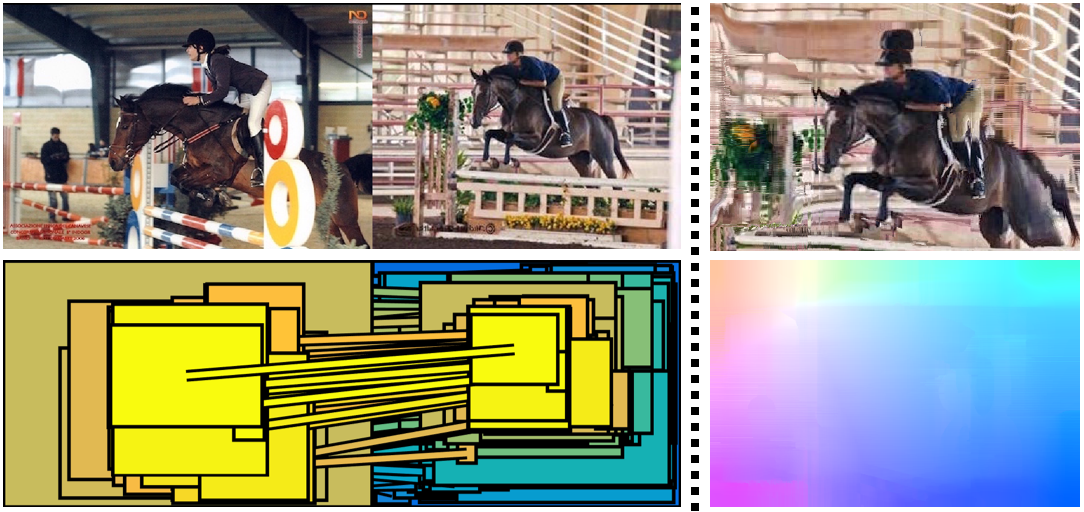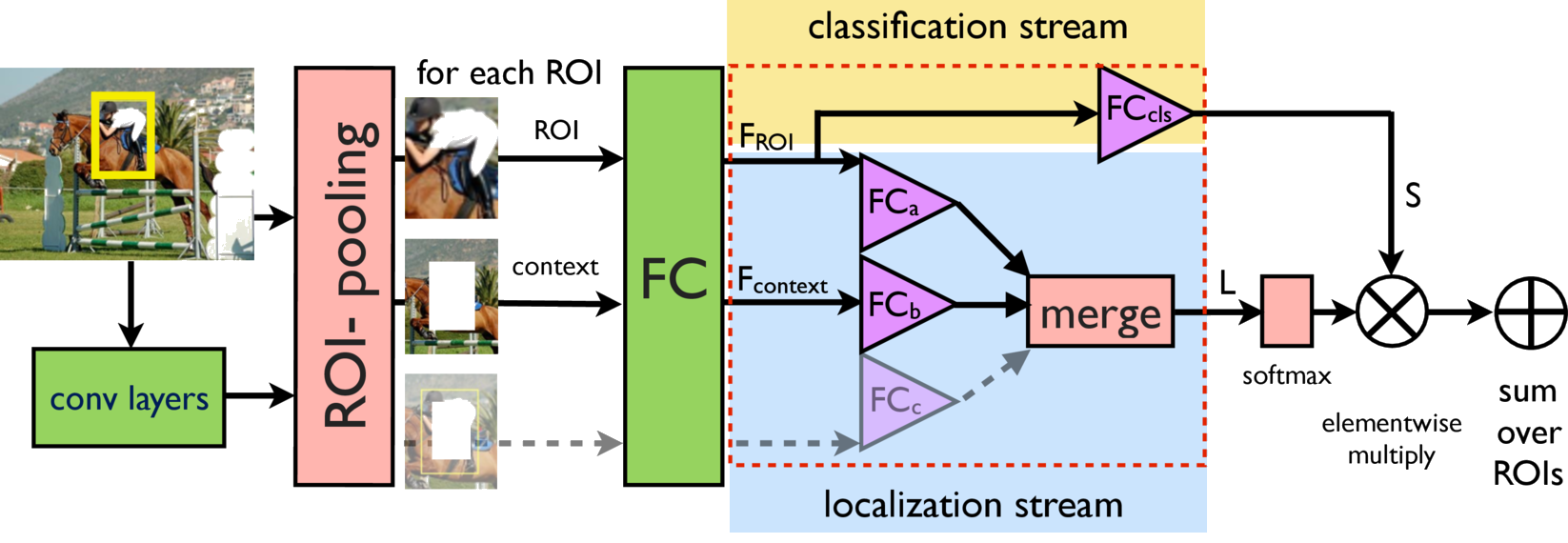Section: New Results
Category-level object and scene recognition
Proposal Flow
Participants : Bumsub Ham, Minsu Cho, Cordelia Schmid, Jean Ponce.
Finding image correspondences remains a challenging problem in the presence of intra-class variations and large changes in scene layout, typical in scene flow computation. In [10], we introduce a novel approach to this problem, dubbed proposal flow, that establishes reliable correspondences using object proposals. Unlike prevailing scene flow approaches that operate on pixels or regularly sampled local regions, proposal flow benefits from the characteristics of modern object proposals, that exhibit high repeatability at multiple scales, and can take advantage of both local and geometric consistency constraints among proposals. We also show that proposal flow can effectively be transformed into a conventional dense flow field. We introduce a new dataset that can be used to evaluate both general scene flow techniques and region-based approaches such as proposal flow. We use this benchmark to compare different matching algorithms, object proposals, and region features within proposal flow with the state of the art in scene flow. This comparison, along with experiments on standard datasets, demonstrates that proposal flow significantly outperforms existing scene flow methods in various settings. This work has been published at CVPR 2016 [10]. The proposed method and its qualitative result are illustrated in Figure 5.
|
Learning Discriminative Part Detectors for Image Classification and Cosegmentation
Participants : Jian Sun, Jean Ponce.
In this work, we address the problem of learning discriminative part detectors from image sets with category labels. We propose a novel latent SVM model regularized by group sparsity to learn these part detectors. Starting from a large set of initial parts, the group sparsity regularizer forces the model to jointly select and optimize a set of discriminative part detectors in a max-margin framework. We propose a stochastic version of a proximal algorithm to solve the corresponding optimization problem. We apply the proposed method to image classification and cosegmentation, and quantitative experiments with standard bench- marks show that it matches or improves upon the state of the art. The first version of this work has appeared at CVPR 2013. An extended version has been published at IJCV [6].
ContextLocNet: Context-aware deep network models for weakly supervised localization
Participants : Vadim Kantorov, Maxime Oquab, Minsu Cho, Ivan Laptev.
In [11] we aim to localize objects in images using image-level supervision only. Previous approaches to this problem mainly focus on discriminative object regions and often fail to locate precise object boundaries. In [11] we address this problem by introducing two types of context-aware guidance models, additive and contrastive models, that leverage their surrounding context regions to improve localization. The additive model encourages the predicted object region to be supported by its surrounding context region. The contrastive model encourages the predicted object region to be outstanding from its surrounding context region. Our approach benefits from the recent success of convolutional neural networks for object recognition and extends Fast R-CNN to weakly supervised object localization. Extensive experimental evaluation on the PASCAL VOC 2007 and 2012 benchmarks shows hat our context-aware approach significantly improves weakly supervised localization and detection. A high-level architecture of our model is presented in Figure 6, the project webpage is at http://www.di.ens.fr/willow/research/contextlocnet/.
|
Faces In Places: Compound query retrieval
Participants : Yujie Zhong, Relja Arandjelović, Andrew Zisserman.
The goal of this work is to retrieve images containing both a target person and a target scene type from a large dataset of images. At run time this compound query is handled using a face classifier trained for the person, and an image classifier trained for the scene type. We make three contributions: first, we propose a hybrid convolutional neural network architecture that produces place-descriptors that are aware of faces and their corresponding descriptors. The network is trained to correctly classify a combination of face and scene classifier scores. Second, we propose an image synthesis system to render high quality fully-labelled face-and-place images, and train the network only from these synthetic images. Last, but not least, we collect and annotate a dataset of real images containing celebrities in different places, and use this dataset to evaluate the retrieval system. We demonstrate significantly improved retrieval performance for compound queries using the new face-aware place-descriptors. This work has been published at BMVC 2016 [17]. Figure 7 shows some qualitative results.




